Alexandre Gourary. Collection
Contact Kazerne Dossin Documentation Centre: archives@kazernedossin.eu Alexandre Gourary was born in Odessa, Russia, on 28 May 1918, as the oldest son of Michel Gourary and Elisabeth Trainin. He had an older sister, Judith (Dita), born in Petrograd, Russia, on 26 July 1915. The family fled Russia after the Russian revolution. A third child, Samuel Georges Gourary, was born in Naples, Italy, on 7 July 1921. The family settled eventually in Vienna, Austria. In 1935, Elisabeth and youngest son Samuel Georges moved to Belgium, followed by Alexandre in 1937 and Judith in 1938. The fate of father Michel Gourary is unclear. It is possible that he was deported from Vienna to Riga and perished during a death march in 1945. Elisabeth remarried the Belgian banker Arthur Kohn and the family settled in Saint-Gilles, Brussels. The children Gourary became students and were very active in organisations such as the right-wing Zionist youth movement Brith Trumpeldor (BETAR). When war broke out in May 1940, Alexandre and younger brother Samuel Georges Gourary fled south. They were halted in Calais and were able to return home in June 1940. On 3 November 1941, Samuel Georges Gourary was arrested in Givet, on a train heading for France, trying to illegally cross the border. He was detained at the prison of Saint-Gilles from 5 November 1941 until his release on 19 January 1942. While detained, his mother Elisabeth Trainin and his siblings received permission to deliver packages and visit him multiple times. Samuel Georges Gourary was arrested a second time on 21 July 1942 in Antwerp. He survived deportation via Transport VI from the Dossin barracks to Auschwitz-Birkenau in August 1942 and was repatriated in 1945. Samuel Georges Gourary emigrated to Israel around 1948. He married and had children. Alexandre Gourary was arrested under unknown circumstances and was interned at the Dossin barracks on 28 September 1943. During his internment, he illegally crafted a Hanukiah from small pieces of wood. The candlestick was lit from 21 until 28 December 1943 to celebrate Hanukkah. On 6 January 1944, Alexandre was relocated to the retirement home Scheut in Anderlecht, led by the Jewish Association of Belgium and under supervision of the Sicherheitspolizei-Sicherheitsdienst. Alexandre was chosen for the job after German major Wilhelm von Hahn gave an order to select him. As a worker at the retirement home, Alexandre Gourary succeeded in also getting his mother and stepfather out of the Dossin barracks. Arthur Kohn was placed at the elderly home Scheut in Anderlecht, Elisabeth Trainin at Tyteca (?). Both survive the war and were contacted later on by Wilhelm von Hahn, whom requested that they testify about his “anti-Nazi actions” during the war. Alexandre Gourary managed to escape the retirement home Scheut in Anderlecht and joined the Saint-Gilles branch of the Mouvement national belge (Belgian National Mouvement), an armed resistance group. He took on the false name René Perin and participated in the liberation and the guarding of the port of Antwerp. Alexandre survived the war, settled in Belgium, married and had children. He was an active member of the Fédération Nationale des Anciens Combattants et Résistants Juifs de Belgique (National Federation of Jewish Former Combatants and Resistance Fighters in Belgium). Judith Gourary also survived. She continued her career in architecture after the war and married Belgian architect Jean Roque. Judith founded the Union of Women Architects in Belgium and fought for the role of female architects worldwide. Judith (Dita) Gourary-Roque passed away in 2010. This collection contains three issues of « La Voix Internationale de la Résistance » ; two photos of the liberation of Bergen-Belsen ; seven photos of tombstones of Jewish resistance fighters who were killed in action or executed and were buried at the Tir National (National shooting range) in Brussels ; 74 photos and photonegatives depicting the armed Mouvement national belge (MNB) liberating Antwerp, protecting the harbour and undertaking military exercises ; a Sten machine gun and a hand grenade used by Alexandre Gourary while guarding the port of Antwerp ; a jacket worn by Alexandre Gourary as a member of the MNB ; twenty-seven documents including several post-war membership cards of the MNB, certificates proving Alexandre Gourary’s involvement in underground press, post-war correspondence between major Wilhelm von Hahn on the one hand and Elisabeth Trainin and Arthur Kohn on the other discussing Von Hahn’s anti-Nazi actions, Alexandre Gourary’s work permit for the retirement home Scheut in Anderlecht, and post-war documents of the Fédération Nationale des Anciens Combattants et Résistants Juifs de Belgique.
- EHRI
- Archief
- be-002157-kd_00065
- Antwerp
- Liberation
Bij bronnen vindt u soms teksten met termen die we tegenwoordig niet meer zouden gebruiken, omdat ze als kwetsend of uitsluitend worden ervaren.Lees meer




